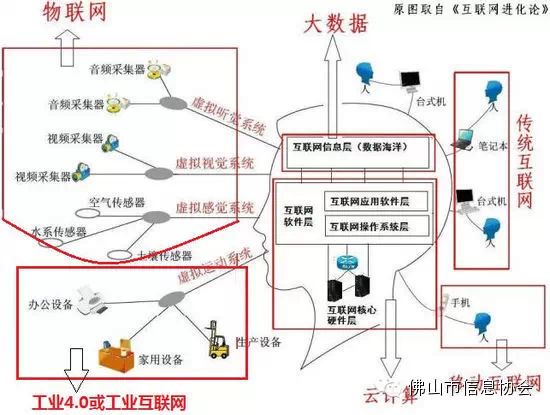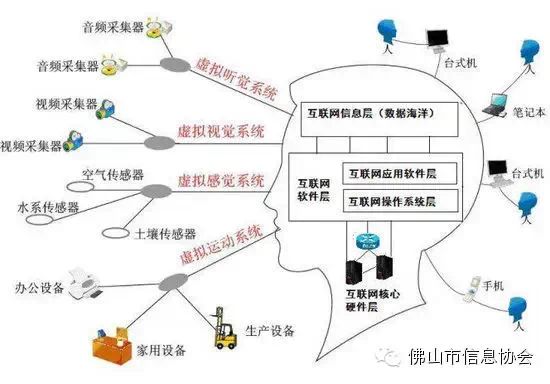New concepts in the internet are emerging endlessly. After the rise of cloud computing, the Internet of Things (IoT), and big data, Industry 4.0 began to receive increasing attention in 2014 and became a new hotspot in 2015. It is necessary for us to understand what this new concept means and how it relates to other internet concepts.
In April 2013, the German government officially launched the “Industry 4.0” strategy at the Hannover Messe to enhance the competitiveness of German industry and gain a leading edge in the new industrial revolution.
The academic and industrial circles in Germany believe that the concept of “Industry 4.0” is the fourth industrial revolution dominated by intelligent manufacturing or revolutionary production methods. This strategy aims to transform manufacturing into an intelligent process by fully utilizing information communication technology and combining it with cyber-physical systems.

Germany’s Industry 4.0 does not explicitly state its relationship with the internet. Simply put, countless industries have been impacted by the wave of the internet, and the internet has begun to transform industrial manufacturing.
In a paper we published in 2007 on the evolution of the internet, we proposed that “the internet will evolve in a direction highly similar to the human brain. It will have its own vision, hearing, touch, motor nervous system, as well as its own memory nervous system, central nervous system, and autonomic nervous system, meaning the internet is forming an internet brain.” We also illustrated the future structure of the internet.

In 2014, we used this diagram to analyze the relationship between IoT, cloud computing, big data, and the internet:
1. The IoT is the sensory nervous system of the internet brain, emphasizing the concept of perception through sensors. It also has functions such as network transmission, information storage and processing, and industry application interfaces. Moreover, it often shares servers, network lines, and application interfaces with the internet, enabling communication between people (Human to Human, H2H), between humans and things (Human to Thing, H2T), and between things (Thing to Thing, T2T), ultimately integrating human society, information space, and the physical world (human-machine-object).
2. Cloud computing is the central nervous system of the internet brain. In the architecture of the internet virtual brain, the central nervous system unifies the core hardware layer, core software layer, and internet information layer to provide support and services to various virtual nervous systems of the internet. From a definitional standpoint, cloud computing aligns well with the characteristics of the central nervous system of the internet virtual brain. Ideally, IoT sensors and internet users interact with cloud computing through network lines and computer terminals, providing data to cloud computing and receiving services from it.
3. Big data is the foundation of the wisdom and consciousness generated by the internet and the source of the arrival of the internet dream era. As the internet brain matures, virtual reality technology enters a new stage. Unlike traditional virtual reality, this new period is no longer merely an overlay of virtual images and real scenes (AR), nor is it the display of three-dimensional images on a massive screen (VR). It begins to combine more closely with big data and artificial intelligence, using vast amounts of data to serve virtual reality technology, allowing people to experience a sense of reality and interaction, creating an illusion in the human brain, and interacting sensory nerves such as vision, hearing, smell, and motion with the internet dream system, producing a dream-like experience (Real dream) in a waking state, leading to the following diagram:

From this diagram, we can also see that Industry 4.0 or the industrial internet is essentially the budding of the motor nervous system of the internet. The central nervous system of the internet, which is the software system in cloud computing, controls the production equipment of industrial enterprises, household appliances, and office devices, transforming mechanical equipment into tools for the internet brain to reshape the world through technologies like intelligence, 3D printing, and wireless sensing. At the same time, these intelligent manufacturing and devices continuously feed big data back to the internet brain for decision-making by the central nervous system.

Overall, Western companies and theorists continuously propose new internet concepts that are somewhat fragmented. However, whether it is IoT, cloud computing, big data, mobile internet, or Industry 4.0, they are all part of the future development of the internet. They play different roles. Due to China’s increasingly developed internet sector and its relatively strong manufacturing industry, the development of the motor nervous system of the internet in China will inevitably surpass that of Germany or the United States in the future.
Supplementary Material:
Similar to Industry 4.0, in June 2013, GE proposed the Industrial Internet Revolution. In his speech, Immelt stated that an open and global network would connect people, data, and machines. The goal of the Industrial Internet is to upgrade key industrial sectors. Today, there are millions of machines worldwide, from simple electric motorcycles to advanced MRI machines. There are thousands of clusters of complex machinery, from power plants to transport planes.
Source: NetEase Technology
